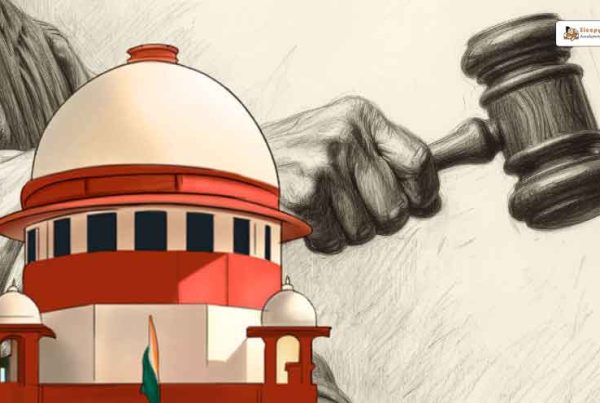The Indian Constitution, adopted in 1950, has been amended numerous times to address the evolving needs of the nation. These amendments reflect the dynamic nature of India’s democracy and its response to various social, economic, and political challenges. This article provides a historical overview of key amendments to the Indian Constitution and their impact on governance and society.
Key Takeaways
- The Indian Constitution has been amended multiple times to keep up with the changing needs of the country.
- Major amendments like the First Amendment Act, 1951, and the 42nd Amendment Act, 1976, have had significant impacts on Indian society.
- The amendment process is guided by Article 368, which outlines the procedures and requirements for making changes to the Constitution.
- Judicial interpretations, such as the Basic Structure Doctrine, play a crucial role in reviewing and validating constitutional amendments.
- Amendments have influenced various aspects of governance, including federalism, state relations, and social justice initiatives.
Historical Context of Constitutional Amendments
Pre-Independence Influences
The Indian Constitution evolved through two distinct periods: the rule under British EIC (1773 – 1858) and the rule under the British Crown (1858 – 1947). During these times, various acts and reforms laid the groundwork for India’s constitutional framework. Key legislations like the Government of India Acts and the Indian Councils Acts introduced elements of self-governance and representation, which influenced the future constitution.
Post-Independence Developments
After gaining independence in 1947, India faced the monumental task of drafting a new constitution. The Constituent Assembly, formed in 1946, was responsible for this task. The assembly included members from diverse backgrounds, ensuring a comprehensive and inclusive constitution. The final document, adopted on January 26, 1950, has since been amended over 100 times to address the changing needs and aspirations of the nation.
Role of the Constituent Assembly
The Constituent Assembly played a crucial role in shaping the Indian Constitution. It held numerous debates and discussions to ensure that the constitution reflected the aspirations of the Indian people. The assembly’s efforts resulted in a document that balanced the need for a strong central government with the importance of individual rights and state autonomy.
The historical underpinnings of the Indian Constitution highlight the country’s journey from colonial rule to a sovereign republic, showcasing the resilience and adaptability of its people.
Major Amendments and Their Impact
First Amendment Act, 1951
The First Amendment Act, 1951, was a significant change to the Indian Constitution. It aimed to address issues related to land reform and freedom of speech. This amendment added restrictions on free speech to protect public order, decency, and morality. It also introduced provisions to safeguard the rights of backward classes.
42nd Amendment Act, 1976
The 42nd Amendment Act, 1976, is often called the “Mini-Constitution” due to its extensive changes. It aimed to reduce the power of the judiciary and strengthen the central government. This amendment added the words “Socialist” and “Secular” to the Preamble and laid down the Fundamental Duties of citizens. It also curtailed the power of judicial review.
73rd and 74th Amendments
The 73rd and 74th Amendments, passed in 1992, were crucial for promoting grassroots democracy. They provided constitutional status to Panchayati Raj institutions and urban local bodies, respectively. These amendments aimed to decentralize power and ensure greater participation of people in local governance.
The Constitution has been amended more than 100 times since its adoption, reflecting the changing needs and aspirations of the country.
Amendment Procedures and Challenges
Article 368: The Amendment Process
The Indian Constitution outlines the process for amendments in Article 368. This article specifies how changes can be made to the Constitution. There are different types of amendments, including those that require a simple majority and those that need a special majority. Some amendments also need approval from at least half of the state legislatures. This makes the process both flexible and rigid, depending on the type of change being proposed.
Judicial Review and Basic Structure Doctrine
The judiciary plays a crucial role in the amendment process. Through judicial review, courts can examine the validity of constitutional amendments. The Basic Structure Doctrine is a key principle here. It states that certain fundamental features of the Constitution cannot be altered by amendments. This doctrine ensures that the core values of the Constitution remain intact, even as other parts are modified.
Political and Social Challenges
Amending the Constitution is not just a legal process; it also involves political and social challenges. Different political parties may have varying views on proposed amendments, leading to debates and delays. Social factors, such as public opinion and activism, can also influence the amendment process. These challenges make it difficult to achieve consensus on significant changes, adding another layer of complexity to the constitutional amendment process.
Federalism and State Relations
Centre-State Relations
The Indian Constitution sets up a federal system where power is shared between the central government and the states. Federalism in India is unique because it has a quasi-federal nature. This means that while there is a division of power, the central government holds more authority in certain areas like defense and foreign affairs. States have control over matters such as education and law and order.
Inter-State Disputes
Inter-state disputes often arise due to disagreements over resources, boundaries, and administrative control. These disputes are usually resolved through negotiations or by the intervention of the central government. Sometimes, the Supreme Court also plays a role in settling these conflicts.
Role of Finance Commissions
The Finance Commission is crucial in managing financial relations between the center and the states. It recommends how taxes should be divided and ensures that states receive adequate funds for their needs. The Constitution (Eightieth Amendment) Act, 2000, introduced a new scheme for tax distribution, ensuring a fair share for the states.
The federalism in India is notable for its quasi-federal nature of government. A quasi-federal government is often characterized by a division of power between the central and state governments, with the central government holding more authority in certain areas.
Rights and Duties: Evolution Through Amendments
Fundamental Rights
The Indian Constitution originally granted several fundamental rights to its citizens. Over time, these rights have been expanded and clarified through various amendments. For instance, the First Amendment Act, 1951 allowed the state to make special provisions for the advancement of any socially and educationally backward classes. This amendment aimed to promote social justice and equality.
Directive Principles of State Policy
The Directive Principles of State Policy are guidelines for the government to follow in order to create a just society. These principles have been updated to reflect changing social and economic conditions. The 42nd Amendment Act, 1976, for example, explicitly included the terms “secular” and “socialist” in the Preamble, emphasizing the state’s commitment to these ideals.
Fundamental Duties
Fundamental Duties were added to the Constitution by the 42nd Amendment Act, 1976. These duties serve as a constant reminder to citizens that they have responsibilities towards their country and fellow citizens. The duties include respecting the national symbols, cherishing the noble ideals of the freedom struggle, and protecting the environment.
The evolution of the Indian Constitution through amendments has been a dynamic process, reflecting the changing needs and aspirations of its people.
Judicial Interpretations and Landmark Judgments
Kesavananda Bharati Case
The Kesavananda Bharati case of 1973 is one of the most important verdicts in India’s legal history. The Supreme Court introduced the Basic Structure Doctrine, which means that while Parliament can amend the Constitution, it cannot change its basic structure. This case overruled the earlier Golakhnath case, which had given Fundamental Rights a “transcendental and immutable” status.
Minerva Mills Case
In the Minerva Mills case of 1980, the Supreme Court reinforced the Basic Structure Doctrine. The court struck down parts of the 42nd Amendment, stating that they violated the basic structure of the Constitution. This case further solidified the role of judicial review in protecting the Constitution.
Recent Judicial Trends
Recent years have seen the judiciary play a crucial role in interpreting the Constitution. Many ‘great judgments‘ are delivered daily, yet only a handful shape India’s constitutional perspective, therefore becoming ‘landmark cases’. The courts have been active in areas like social justice, environmental protection, and individual rights, ensuring that the Constitution evolves with changing times.
Impact on Governance and Society
Changes in Governance Structures
The amendments to the Indian Constitution have led to significant changes in governance structures. One major amendment was the 73rd and 74th Amendments, which introduced Panchayati Raj institutions and urban local bodies. These changes aimed to decentralize power and bring governance closer to the people. This has allowed for more local participation in decision-making and has improved the delivery of public services.
Social Justice and Affirmative Action
Amendments have also played a crucial role in promoting social justice and affirmative action. For instance, the 42nd Amendment Act, 1976, added the words “socialist” and “secular” to the Preamble, emphasizing the state’s commitment to social equity. Various amendments have ensured reservations for Scheduled Castes, Scheduled Tribes, and Other Backward Classes in educational institutions and government jobs, aiming to uplift disadvantaged communities.
Economic Reforms and Liberalization
Economic reforms and liberalization have been significantly influenced by constitutional amendments. The 1991 economic reforms, although not directly an amendment, were supported by changes in policies that aligned with the constitutional framework. These reforms opened up the Indian economy to global markets, leading to rapid economic growth and development. The amendments have thus facilitated a more flexible and dynamic economic environment.
The Indian Constitution has evolved to meet the changing needs of society, ensuring that governance structures remain effective and inclusive.
The impact of governance on society is profound and far-reaching. Good governance can lead to a more just and equitable society, while poor governance can result in corruption and inequality. To learn more about how governance affects our daily lives and what you can do to make a difference, visit our website today.
Conclusion
The Indian Constitution has evolved significantly since its inception, shaped by numerous amendments that reflect the changing needs and aspirations of the nation. These amendments have not only addressed immediate concerns but have also laid the groundwork for future governance. From ensuring social justice to enhancing federal structures, each amendment has played a crucial role in the democratic journey of India. As we look back at these key changes, it becomes evident that the Constitution is a living document, continually adapting to the dynamic landscape of Indian society and politics. Understanding these amendments helps us appreciate the resilience and flexibility of the Indian democratic framework, ensuring it remains robust and relevant for generations to come.
Frequently Asked Questions
What influenced the Indian Constitution before independence?
Before independence, the Indian Constitution was influenced by British colonial rule and various Indian freedom movements like Satyagraha and Civil Disobedience.
What is the First Amendment Act of 1951?
The First Amendment Act of 1951 made changes to the Constitution to address issues related to land reform and freedom of speech.
What was the 42nd Amendment Act of 1976?
The 42nd Amendment Act of 1976 is known for making significant changes to the Constitution, including curtailing the power of the judiciary and strengthening the central government.
What do the 73rd and 74th Amendments focus on?
The 73rd and 74th Amendments focus on strengthening local self-governance by establishing Panchayati Raj institutions and municipalities.
What is Article 368?
Article 368 of the Indian Constitution outlines the process for amending the Constitution, requiring a special majority in Parliament and, in some cases, ratification by states.
What is the Basic Structure Doctrine?
The Basic Structure Doctrine is a judicial principle that certain fundamental features of the Constitution cannot be altered by amendments.






